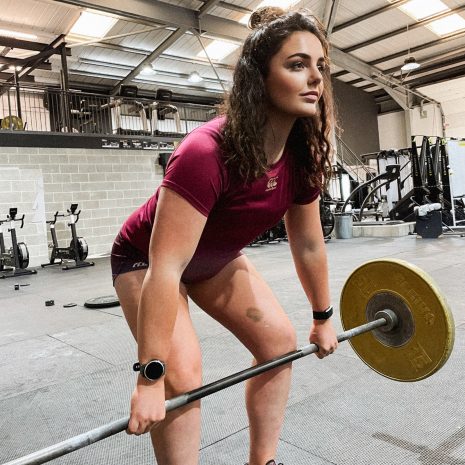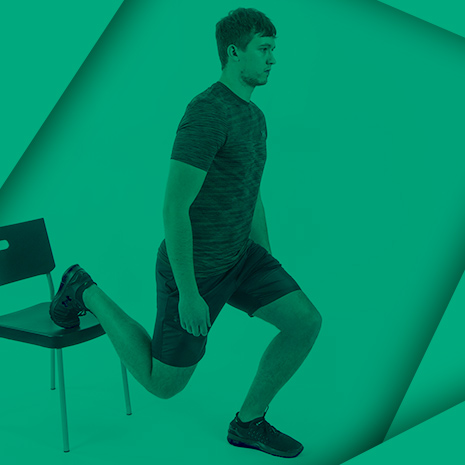We have teamed up with esteemed Chartered Physiotherapist, Neil Aitken to give you high-quality information on the most common Rugby injuries and how to best recover from them. If there’s a particular injury you’d like us to cover with Neil’s help, get in touch with us on social media (Facebook | Twitter).
What Is My Groin And How Is It Injured?
The muscles on the inside of the thigh are commonly referred to as the groin and consist of 5 muscles: the Adductors (brevis, longus and magnus), Pectineus and Gracilis.

An injury to the groin is typically felt either midway down the inside thigh or at the top of the groin where the tendon meets the pelvis. Most commonly it is a muscular injury and pain is felt in the muscle belly midway down the inside thigh. A sharp pain is usually felt at the time of injury and will gradually subside and leave an aching feeling.

As with all muscular injuries, we grade it from 1-3. A grade 1 is a minor tear of a few muscle fibers, a grade 3 is a full rupture. It is most common to have either a Grade 1 or 2 injury. The types of activity that will cause an injury are sharp changes of direction or an overstretching mechanism such as being cleared out when jackling at a ruck. If you sustain this type of injury you should not attempt to play on as you will be causing further damage and therefore prolonging your likely recovery timescales.
How To Treat A Groin Injury
The immediate management is the usual PRICE regime, so protection, rest, ice, compression and elevation.

With any muscular injury, there will be bleeding/swelling, so PRICE is used to minimise this. The main things for a groin strain are ice, compression bandage/support and rest. If it is a grade 1 strain, you should feel the pain easing after roughly 48 hours. A grade 2 may require PRICE to continue for 5-7 days. A grade 3 may require up to 2 weeks. If the pain is very severe, you may have to use crutches until it is less painful to walk.
As pain starts to subside, it is then important to rehabilitate the injured tissue. This is mainly through strengthening exercises but will also include some stretching. Strengthening should start in the form of a static contraction. This is called isometric strengthening. It is okay to feel low-level pain during this in the early stages of rehab. Any pain should be low level and ease quickly after you finish the exercise. An example of this may be to squeeze a ball between your knees while on your back.
This should be progressed to both concentric and eccentric strengthening exercises. Concentric is when the muscle shortens, an example of which would be pulling your leg towards the other one against a resistance band. Eccentric is when the muscle lengthens so using the previous concentric example you would really work to control the motion of your leg as it moves away from the standing leg, fighting against the pull of the resistance band.
Stretching should include both static stretches and ballistic movements. Static stretches should target both the short and long adductors. This is done by having the knee bent or straight. The classic seated groin stretch, with your feet together near your groin and pushing your knees down and out, stretches the short adductors. A standing groin stretch with your knees straight would stretch the long adductors.

Rehab should be guided by pain as to when to begin and how quickly to progress. Exercises should progress in intensity culminating in more sport specific activities like running/sidestepping/jumping/jackling/kicking.
How To Prevent A Groin Injury
It is important to strengthen the groin and also the glutes. The glutes work with the groin to control your hip. Any weakness in either the groin or the glutes could make you more susceptible to a groin injury.
Warm up well before training and playing. Include activities specific to your role, such as kicking or jackling.
About the author
Neil Aitken is a Chartered Physiotherapist with a private clinic in Edinburgh. He has previous experience as a senior physiotherapist in the NHS and provided physio for one of the top amateur rugby teams in Scotland. He is highly evidence-based having completed a Post Grad in Musculoskeletal Physiotherapy gaining membership to the MACP, one of the most highly respected qualifications within physiotherapy.
Website: http://www.neilaitkenphysio.co.uk/
Facebook: https://www.facebook.com/neilaitkenphysio/
Twitter: @aitkenphysio

Please note, this article is intended to serve as a guide for general information only. Injuries should be assessed by a qualified specialist such as a physiotherapist or doctor. When you sustain an injury, there are always complicating factors that may need to be assessed and addressed by a professional.




Comments